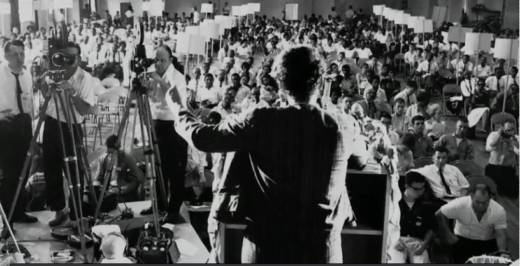The Right to an Education
Mary McLeod Bethune was the first in her family to get an education. A prized opportunity, she understood the value and importance of education and continued to advocate for the right to learn throughout her personal and professional life. As Director of the Division of Negro Affairs and National Youth Administration under the Roosevelt administration, Bethune fought for education as a right for all. This American Experience resource details Bethune’s contribution in the struggle for education.
Citizenship Education
Learn about the citizen education programs used by civil rights activists in this clip from Memories of the March. Citizen training workshops, like the ones attended by Dorothy Cotton, were crucial in uniting members of the African-American Civil Rights Movement across the country. This Memories of the March video highlights the contributions of Dorthy Cotton.
Remembering Civil Rights Leader Dorothy Height
Considered by some as the “Godmother of the Civil Rights Movement”, Dorothy Height was a leader of both the civil rights and women’s rights movements. She was an advisor to Martin Luther King Jr. and fought tirelessly for equality and justice. Learn more about Height and her influence in this clip.
Ella Baker and the SNCC | The African Americans
As a grassroots organizer and founder of “SNCC”, Ella Baker fought to eradicate sexism and racism through peaceful protests. In this video, learn about Ella Baker and her contributions to civil rights for women.
The Right to Health Care: Roots of the Pill
As a nurse in New York, Margaret Sanger witnessed the unnecessary suffering of women due to reproductive issues. These experiences inspired her to advocate for birth control and establish the first birth control clinic in America. This clinic later evolved into Planned Parenthood. In this video, learn more about Sanger and the fight for reproductive rights.
Women’s Right to Choose
Roe v. Wade marked a momentous moment in legal literature and social sentiments. Through this court decision, women gained sovereignty over their bodies and the choice over their health care. This video clip examines Jane Roe’s role in the fight for women’s right for health care.
The Lasting Impact of Women in the Civil War
The following video examines women entering the workplace during war time. During the Civil War, women began working in textile mills and as army nurses. Through their efforts they affirmed their contributory role in the work place; aiding the war movement and saving lives. Use this video clip to teach students about the critical roles of nurses like Dorothea Dix and Clara Barton.
Title IX and the Education Amendments of 1972
Title IX legislation was integral in providing women with the opportunity to not only participate in sports, but to get an education and enter the workplace. It encouraged institutions to provide equal opportunities to men and women. Explore how today’s leaders, such as Meg Whitman, Dr. Susan Love, and Hillary Clinton, benefited from Title IX legislation in the following video clip.
Sign up for a free account in PBS LearningMedia to create multi-media learning experiences with public media resources.
